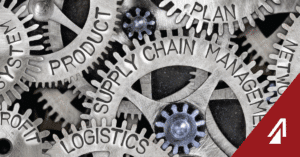Business relationships are often stressful. Logistics is no exception; especially in the way 3PLs and carriers view each other. Both companies have independent interests that need to be maintained to keep their businesses going; often these interests collide with one another. But, both 3PLs and carriers need each other to succeed. Theodore Roosevelt said, “The most important single ingredient in the formula of success is knowing how to get along with people.” Here are some tips 3PL providers and carriers can work on to improve their relationships with one another.
Set the Stage for the Job
Before beginning any spot bid loads or signing up for long term contracts, both 3PLs and carriers need to understand what they are getting into.
3PLs act as an arm of their customers. They manage specific portions of their customers’ supply chains that may have specific requirements. Just-In-Time service often creates stricter requirements for drivers. This often means time-sensitive freight, strict appointments, as well as advanced tracking methods. Some freight requires special qualifications, such as the carrier be C-TPAT certified, to handle. What, When, and How products are shipped factor in to what freight carriers are able to handle.
Carriers need to know these factors in order to make informed decisions about what services they can offer. They need to know load frequency and pickup and delivery locations so they can plan for trucks, drivers, and help establish a workable lane network. They need to know details like how urgent the delivery is and whether or not loads will require additional services like specialized trailers or team service. Longer contracts may constitute the need for drop trailers or seasonal pricing. Additionally, they need to know the payment schedule, factoring company use, and other financial processes.
There are hundreds of tiny components that 3PLs and carriers need to know before working together. Spot bid loads may not need as much in-depth detail as an annual contract, but both parties still need to know what is required in order to succeed.
Develop Clear Goals and Expectations
Being on the same page is crucial in business relationships. Both parties need clear, measurable goals to know if both of their expectations are being met. 3PLs need to meet customer requirements and carriers have numerous commitments they need to honor; both need to be clear if the requirements are even something that can be accomplished. If not, both parties will be disappointed.
What would be an example of clear, concise goals? For a spot bid, it could be specific pick-up and delivery times, a definite weight, and whether or not the truck has automated tracking. Contracts could require a defined time frame, a commitment to a certain number of loads on a lane, or a defined rate – the point is, the goals and expectations need to be explicit. Both parties need to understand what the objective is and the consequences for not adhering to them.
To improve the relationship, both parties need to come together to understand what is expected and develop a clear method to measure whether the expectations were met. 3PLs, like ProTrans, use carrier scorecards to indicate carrier performance. These scores are often reviewed quarterly to assess the service and quality of the relationship. Often, clear and open communication between carriers and 3PLs is necessary to determine if job is being done sufficiently. Clear communication is the key, and both parties can reduce the struggles of misunderstandings by being clear at the outset.
Create Common Goals
Loads do not need to have winners and losers; 3PLs and carriers can work together and align their goals for a win-win situation. 3PLs can simultaneously cover loads and send carriers on lanes that land drivers in more favorable destinations for continuing legs or home time. Carriers can keep their drivers moving and save 3PLs money. The more aligned the goals are, the better the relationship will be for both parties. To help align goals, try to see from the others’ perspective. Whether it be a customer who needs their freight or a driver needs to get home or paid, everyone has commitments. Both can benefit by keeping the others’ interests in mind. If a carrier works with keeping the 3PL’s customer in mind, the 3PL will be more likely to use that carrier for future business. If a 3PL takes care of the carrier’s drivers, those drivers would rather run more freight for that 3PL over others who may not care for them.
By working together, 3PLs and carriers can achieve more than if each only looked out for its own interest. Synergy is a business buzzword that is nearly cliché, but its meaning is true. Stephen Covey, author of 7 Rules for Highly Effective People, says “Synergy is better than my way or your way. It’s our way.” By synergizing and aligning goals, both parties succeed and achieve more.
Do What You Say You Will Do
3PLs and carriers often strain relationships by not living up to their commitments. Both parties need to hold up their end of the bargain, if they want the relationship to continue. 3PLs will not give more loads to carriers who cannot handle the ones they have. Carriers will not run more loads if they are not being paid for the ones they did. It is a symbiotic relationship that both need to maintain to be successful. This is why having detailed goals and expectations, as well as being able to measure them, is so crucial. Both parties need to evaluate their performances against the standard set by the contract. If the load needs to deliver at a certain time, deliver it at that time. If payment terms are set, strictly adhere to those terms.
When terms of the contract are met, both parties can continue and work well together. If terms of the contract are not met, take the specified actions according to the contract. If not, bad behavior will continue and the issues will get worse. Patterns will be developed and contracts will not be taken seriously. Business relationships require strict discipline to keep things running smoothly.



